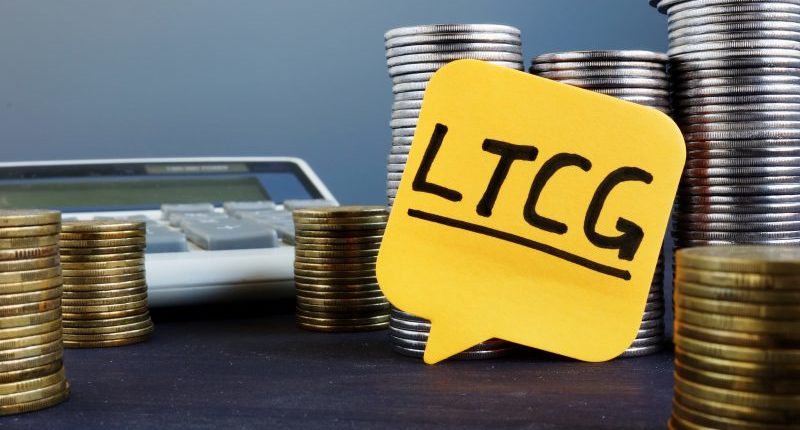The gains on the sale of a capital asset are taxable as capital gains. The tax depends on the holding period of the asset and the type of capital asset. While calculating the capital gains, one can also take the benefit of indexation. There are specific capital gains exemptions you can claim subject to making certain investments and fulfilment of specific conditions.
The tax on capital gains is due in the financial year in which you transfer the capital asset. Apart from a sale, the other forms of transfer include redemption of a capital asset such as mutual fund units or maturity of tax-free bonds.
Capital assets for taxation include building, land, shares, mutual funds, debentures, bonds, assets used in business, jewellery, bullion, gold ETF, digital gold, etc. The exclusions from capital assets are:
- Stock in trade used in your business, including any raw materials or consumables.
- Personal effects, including assets such as a vehicle for personal use or silver utensils, kept for personal use in the house, any wearing apparel or furniture. But personal effects exclude jewellery, paintings, drawings, sculptures, archaeological collections or any work of art.
- Agricultural land in India.
- Gold bonds issued by the Central Government and deposit certificates issued under Gold Monetisation Scheme of 2015 and Special Bearer Bonds, 1991.
Capital assets get categorised into short-term capital assets and long-term capital assets. The tax rates depend on whether the asset is a short-term or long-term in nature. There are different holding periods for capital assets under the short-term capital asset and long-term capital asset.
Also Read: Scrip-wise details only for LTCG grandfathered up to 31 January 2018
A tabular presentation of the short-term capital asset and long-term capital asset and tax rate:
| Capital asset | Long-term capital asset and tax rate | Short-term capital asset and tax rate |
| Land and building, unlisted shares | Held for more than two years. Taxed at 20% after indexing cost | Held for up to two years. Taxed at slab rates without indexing cost |
| Listed equity shares and securities (Note 1*) | Held for more than one year. Taxed at 10% without indexing cost
Threshold exemption of Rs 1 lakh in case of gains from the sale of equity shares, equity-oriented mutual fund units and unit of a business trust |
Held for up to one year. Taxed at 15% without indexing cost in a case where STT is applicable. Otherwise taxed at slab rates. |
| Debt mutual funds, jewellery and other types of capital assets | Held for more than three years. Taxed at 20% after indexing cost | Held for up to three years. Taxed at slab rates without indexing cost |
*Note 1: Equity shares, preference shares, debentures, bonds, government securities listed on a recognised stock exchange in India. Units of UTI and zero-coupon bonds quoted or unquoted. And, units of an equity-oriented mutual fund, quoted or unquoted.
Note 2: Above classification of capital assets does not apply to depreciable assets
The formula to calculate capital gains:
| Sale value or sale consideration | XXX | |
| Less: Expenses incurred on the transfer | XXX | |
| Cost of acquisition or indexed cost of acquisition | XXX | |
| Cost of improvement or indexed cost of improvement | XXX | |
| Capital gains | XXX | |
Indexation of the purchase cost and cost of improvement involves the use of the cost inflation index notified for each financial year. The indexation helps adjust the cost for inflation year on year.
While reporting capital gains in your income tax return, you need to provide the details of the sale value, cost of acquisition and indexation wherever applicable. In a case where you wish to claim a capital gains exemption, you need to provide the details of the investment in your ITR.
You need to provide scrip-wise details in the case of long-term capital gains on listed equities and mutual funds. The details are necessary in the case of investment made until 31 January 2018. These investments stand grandfathered where you need to compare the fair market value (FMV) as on 31 January 2018 with the sale price to arrive at the capital gains.
To report these details, you can obtain statements from your stockbroker and upload the same using ClearTax’s tax filing platform. All the information such as the ISIN, scrip’s name, purchase and sale price, FMV as on 31 January 2018 and quantity gets automatically reflected in your income tax return. The upload of the statements saves time and tedious comparisons necessary for the calculation of capital gains.
For any clarifications/feedback on the topic, please contact the writer at sweta.dugar@cleartax.in
I am a Chartered Accountant by profession. I specialise in personal taxes and corporate income tax matters. I am an avid reader and track developments in financial markets, economy and other market developments.





